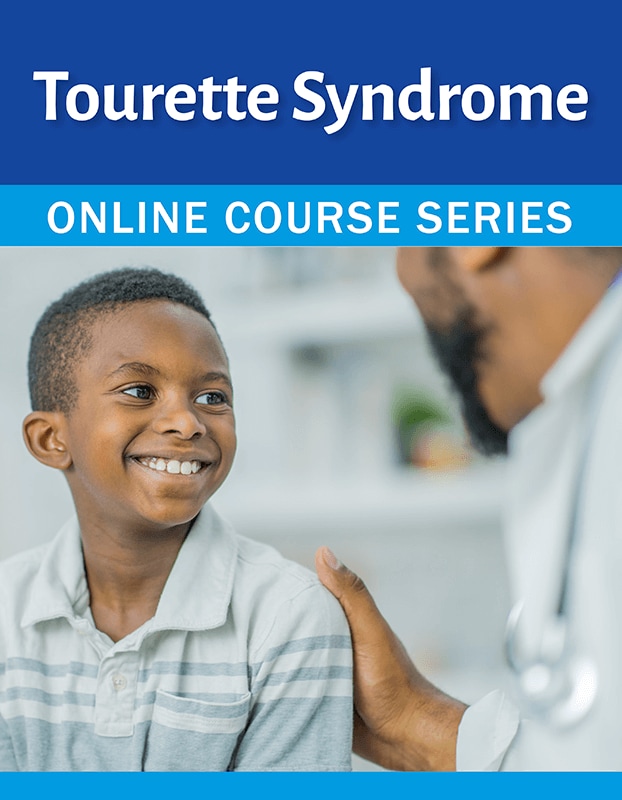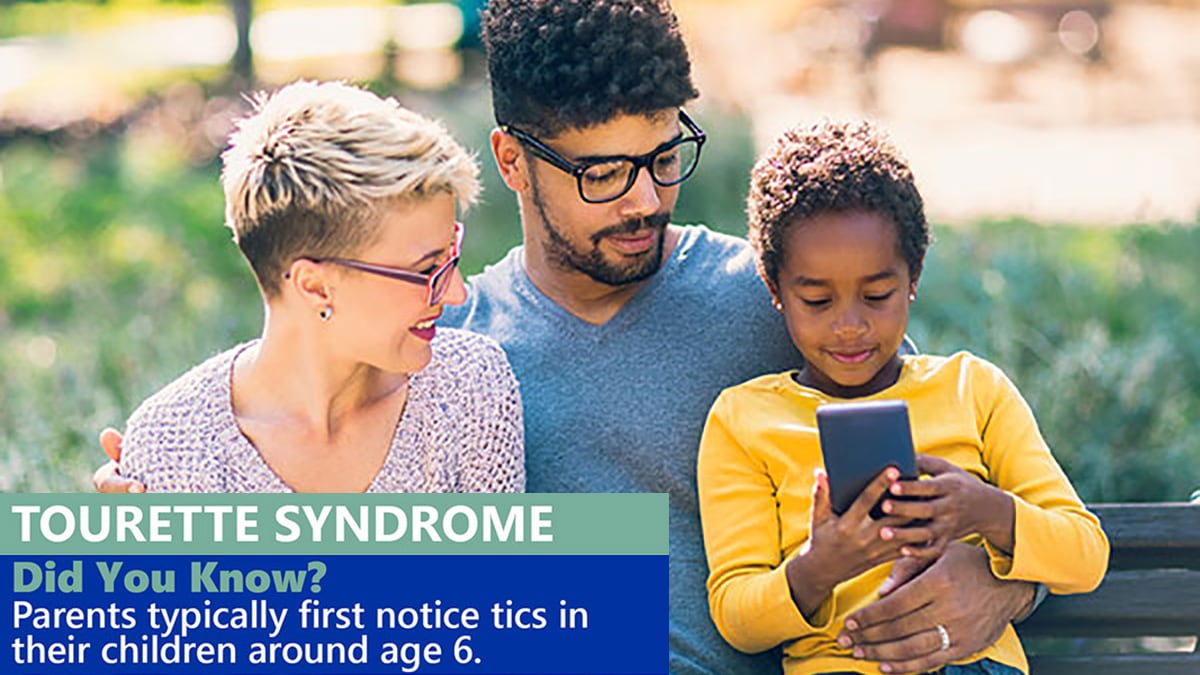At a glance
- CDC and its partners offer trainings and other educational resources to help improve the identification of tic disorders.
- CDC conducts research on tools to help improve screening and identification of tic disorders.

Background
Around 1 million people in the United States have Tourette syndrome (TS) or another tic disorder. More than half of children with TS do not get diagnosed. Identification of tic disorders helps people get the treatment and help they need. CDC and partner resources help improve the identification of tic disorders.
Learn more about Tourette syndrome
Trainings for healthcare providers
CDC has partnered with the American Academy of Pediatrics (AAP) to develop and offer free virtual trainings on tic disorders. This three-part course series is available to pediatricians and other healthcare providers. Trainings can be accessed for free on AAP's Professional Education (PediaLink) website. Course registrants may also be eligible for continuing education credits.
3-Part PediaLink Course Series Available on Demand!

- Part 1: Caring for Children and Adolescents with Tourette Syndrome –This course helps healthcare providers identify and diagnose TS and other tic disorders.
- Part 2: Tourette Syndrome and Beyond: Reducing Disparities and Understanding Tic-Related Conditions –This course helps healthcare providers diagnose TS earlier and connect families and caregivers to services.
- Part 3: Early Identification and Diagnosis of Tourette Syndrome –This course provides healthcare providers with tips, knowledge, and resources to identify Tourette syndrome earlier and offers ways to support families and caregivers. This is the third and final course in a three-part series.
Research on screening and diagnostic tools
In addition to education about tics and tic disorders, healthcare professionals need tools to screen and identify tic disorders, and such tools are currently limited. CDC has worked with academic partners to conduct multiple studies on screening and diagnostic tools to improve identification of children with tics and tic disorders.
Important

Improving Identification of Tic Disorders in Children. Wardrop RC, Lewin AB, Adams HR, Vermilion JA, Cuffe SP, Danielson ML, Bitsko RH, Cai B, Hardin JW. Evidence-Based Practice in Child and Adolescent Mental Health. 2024 Mar 23:1-9.
- Development of a tic screener: The motor or vocal inventory of tics (MOVeIT-14). Evidence-Based Practice in Child and Adolescent Mental Health. Lewin AB, Brennan E, Small B, Bolton C, Dickinson S, Murphy TK. Evidence-Based Practice in Child and Adolescent Mental Health. 2024 Mar 7:1-1.
- Performance of a Tic Screening Tool (MOVeIT) in Comparison to Expert Clinician Assessment in a Developmental-Behavioral Pediatrics Clinic Sample. Vermilion JA, Bitsko RH, Danielson ML, Bonifacio KP, Dean SL, Hyman SL, Augustine EF, Mink JW, Morrison PE, Vierhile AE, Sulkes SB. Evidence-Based Practice in Child and Adolescent Mental Health. 2023 Nov 17:1-7.
- A Population-Based Study of the Utility of Screening for Tics and the Relative Contribution of Tics and Psychiatric Comorbidity to Academic and Social Impairment in Adolescents. Smith JN, Owens JS, Evans SW, Bitsko RH, Holbrook JR. Evidence-Based Practice in Child and Adolescent Mental Health. 2023 Oct 8:1-3.
- Brief youth self-report screener for tics: Can a subscale of the Motor tic, Obsession and compulsion, and Vocal tic Evaluation Survey (MOVES) identify tic disorders in youth?. Lewin AB, Murphy TK, Mink JW, Small BJ, Adams HR, Brennan E, Augustine EF, Vermilion J, Vierhile A, Collins A, Kudryk K. Evidence-Based Practice in Child and Adolescent Mental Health. 2023 Mar 31:1-1.
- Validation of the diagnostic interview schedule for children (DISC-5) tic disorder and attention-deficit/hyperactivity disorder modules. Bitsko RH, Holbrook JR, Fisher PW, Lipton C, van Wijngaarden E, Augustine EF, Mink JW, Vierhile A, Piacentini J, Walkup J, Firchow B. Evidence-Based Practice in Child and Adolescent Mental Health. 2023 Mar 27:1-4.
- Evaluation of new instruments for screening and diagnosis of tics and tic disorders in a well-characterized sample of youth with tics and recruited controls. Adams HR, Augustine EF, Bonifacio K, Collins AE, Danielson ML, Mink JW, Morrison P, van Wijngaarden E, Vermilion J, Vierhile A, Bitsko RH. Evidence-Based Practice in Child and Adolescent Mental Health. 2023 Mar 25:1-5.
Education and support
CDC's National Center on Birth Defects and Developmental Disabilities has partnered with the Tourette Association of America (TAA) to provide educational programs to improve awareness of tic disorders and Tourette syndrome so that more people with tic disorders get the right diagnosis, care, and support. The programs use up-to-date, science-based information to educate physicians and allied professionals and school personnel, as well as those who have Tourette syndrome, their families, and the general public, about Tourette syndrome. In addition to education, the CDC-TAA partnership helps people with a tic disorder and their families make meaningful connections:
- Supporting a Child with Tourette Syndrome—Tourette Association of America
- Online Support Groups for Tourette Syndrome—Tourette Association of America
- Rising Leaders—Tourette Association of America (ages 18-25 years)
- Youth Ambassador Program—Tourette Association of America (ages 12-17 years)
- Junior Youth Ambassador Program—Tourette Association of America (ages 7-11 years)
- American Academy of Pediatrics (AAP). Tourette Syndrome Course Series. Available at: https://www.aap.org/Tourette-Syndrome-Course-Series. Accessed on May 30, 2024
- American Academy of Pediatrics (AAP). Early Identification and Diagnosis of Tourette Syndrome. Available at: https://www.aap.org/Early-Identification-and-Diagnosis-of-Tourette-Syndrome. Accessed on May 30, 2024
